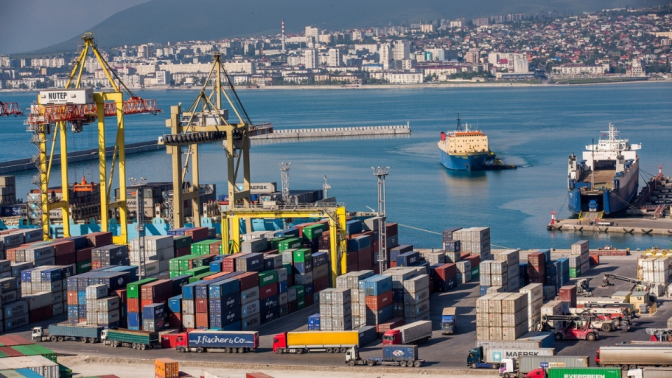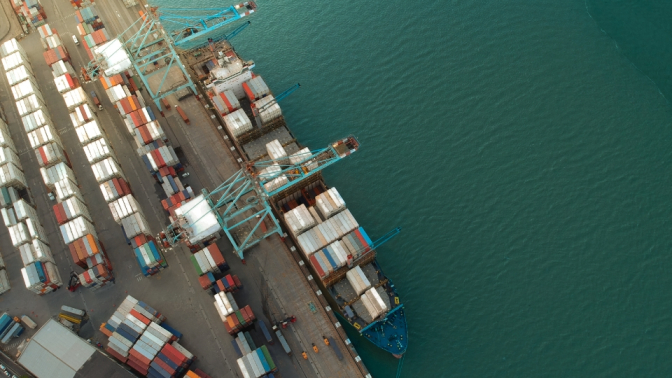The global economy relies heavily on the shipping and port industry, which is responsible for transporting goods and materials worldwide. Digital technologies have the potential to transform the industry, improving efficiency, reducing costs, and increasing transparency in the supply chain. However, implementing digitalization in the port and shipping industry also presents a number of challenges that must be addressed.
This article discusses the challenges and opportunities of port management digitalization. We examine the role of technology, data integration, and AI in transforming the port service industry.
What is Port Digitalization?
Port digitalization involves the adoption of digital technologies to enhance the efficiency, transparency, and competitiveness of ports, terminals, and pilot stations. This may include technologies such as blockchain, digital twins, predictive maintenance, and electronic documentation.
By implementing digital technologies, it is possible to automate and streamline operations, reduce the risk of errors, and improve the overall efficiency of the supply chain. In addition, digitalization can help to reduce costs and increase transparency by providing a single source of information and documentation for all stakeholders.
Benefits of Port Digitalization
Digitalization has the potential to bring significant benefits to ports, terminals, and port authorities. Some of the key benefits of digitalization include:
- Improved efficiency: Digital technologies can help to automate and streamline operations, reducing the risk of errors and improving efficiency. For example, digital systems can be used to track cargo, schedule ships, and optimize the flow of goods through the port.
- Reduced costs: Digitalization can help to reduce costs by eliminating manual processes and increasing the efficiency of operations. For example, digital systems can be used to track and optimize the use of resources, such as fuel and labor.
- Increased transparency: Digital technologies can increase transparency by providing a single source of truth for all stakeholders. This can help to reduce the risk of errors and fraud and improve the overall efficiency of the supply chain.
- Enhanced customer experience: Digitalization can improve the customer experience by providing real-time tracking and visibility of shipments and the ability to access information and services online.
- Better cost allocation: Digitalization can help allocate costs between ship owners and contractors using port facilities. Digitalization can facilitate this through the use of electronic invoicing and billing systems.
Challenges of Port Digitalization

Lack of Standardization
One of the main challenges in the digitalization of the port and shipping industry is the lack of standardization. Shipping and port operations involve a complex network of stakeholders, including ship owners, cargo owners, terminal operators, and government agencies. Each of these stakeholders has their own systems and processes, and there is a lack of standardization across the industry. This makes it difficult to share information and integrate systems, which is essential for digitalization.
“Without standardization, it is difficult to achieve the full benefits of digitalization,” says Arnaud Dianoux, Founder of Opsealog. “If each stakeholder is using a different system to track cargo, vessel performance, and report activities, it is difficult to get a comprehensive view of the logistics and the performance indicators. This can lead to inefficiencies and delays and an increased risk of errors and fraud.”
Inadequate Infrastructure
Another challenge in the digitalization of the port and shipping industry is the need for a robust and reliable infrastructure. Digitalization requires access to reliable internet connectivity, which can be a challenge in some port locations. In addition, port facilities often have outdated or inadequate IT infrastructure, which can limit the deployment of digital technologies.
Without a reliable infrastructure, it is difficult to implement and use digital technologies effectively. For example, if a port facility has limited internet connectivity, it may be difficult to access online systems and share information with stakeholders. This can cause delays and disrupt the efficiency of the supply chain. Ensuring that ports and shipping facilities have a modern and reliable IT infrastructure is essential for successfully implementing digital technologies.
Cultural and Organizational Barriers
There are also cultural and organizational barriers to digitalization in the port and shipping industry. Many organizations in the industry have long relied on traditional methods and may be resistant to change. In addition, there is a lack of skilled personnel with the knowledge and expertise to implement and manage digital systems.
Overcoming these cultural and organizational barriers can be a challenge. Employees may need training and support to adapt to new technologies and processes. It may also require a change in mindset, as some employees may be resistant to using new technologies or may be unsure of how to use them effectively. To successfully implement digital technologies in the port and shipping industry, it is necessary to address these cultural and organizational barriers.
Data Security and Integrity
Ensuring the security and integrity of data is another challenge in the digitalization of the port and shipping industry. The industry handles sensitive and valuable cargo, and the protection of this cargo is of the utmost importance. Digitalization requires sharing data across multiple stakeholders, which can increase the risk of data breaches and cyber-attacks.
To ensure the security and integrity of data, it is important to implement robust cybersecurity measures. Measures such as encryption, two-factor authentication, and regular security updates may be necessary. It is also important to ensure that all supply chain stakeholders use secure systems and practices to protect data. Ignoring these issues can result in serious consequences, including financial losses.
Potential Solutions
There are a number of technologies and strategies that can help to address the challenges of digitalization in the port and shipping industry.
Blockchain
One potential solution is the use of blockchain technology. Blockchain is a secure and decentralized database that allows for the tracking and verification of transactions. It has the potential to improve transparency and efficiency in the supply chain by providing a single source of truth for all stakeholders.
For example, cargo owners can use blockchain to track their shipments in real time, providing visibility and traceability throughout the supply chain. Terminal operators can use blockchain to streamline operations and reduce the risk of errors. Ship owners can use blockchain to improve the efficiency of their operations and reduce costs.
However, the adoption of blockchain in the shipping and port industry is still in its early stages, with challenges to overcome. One challenge is the need for standardization, as different stakeholders may be using different blockchain platforms. Another challenge is integrating existing systems, as it may be difficult to link legacy systems with new blockchain platforms.
Digital Twins
Another potential solution is the use of digital twins. A digital twin is a digital replica of a physical asset, such as a port or a ship, that can be used to optimize operations and identify inefficiencies. Digital twins can be used to simulate different scenarios and make informed decisions about how to optimize operations.
For example, a port facility’s digital twin can identify bottlenecks and optimize cargo flow. A digital twin of a ship can be employed to optimize routes and decrease fuel consumption. Digital twins can also be used to identify maintenance issues and schedule repairs, improving the efficiency of operations.
However, the implementation of digital twins requires significant investment in technology and the availability of data. Some organizations may need help accessing the necessary data or investing in technology to create and maintain digital twins.
Collaboration and Partnerships
Another potential solution is collaboration and partnerships. By working together and sharing information, stakeholders can overcome digitalization challenges. For example, cargo owners and terminal operators can partner to share information and optimize operations. Ship owners and ports can collaborate to improve the efficiency of vessel turnaround times.
Collaboration and partnerships can also help overcome the industry’s need for more standardization. By working together, stakeholders can develop standards and protocols that are relevant and useful for the industry. This can help to facilitate the sharing of information and the integration of systems, enabling the full benefits of digitalization to be realized.
Conclusion
Despite the challenges, the digitalization of the port and shipping industry presents many exciting opportunities. Technologies such as blockchain and digital twins have the potential to overcome the challenges of standardization, infrastructure, and data security and bring significant benefits to the industry. By improving efficiency, reducing costs, and increasing transparency, digitalization can help the industry to stay competitive in the digital age.
It is important to note that we cannot discuss port digitalization without also discussing ship digitalization. As ships become increasingly connected, they will play a critical role in digitalizing port services.
As a data integrator, companies like Opsealog can play a critical role in boosting the digital transformation of ports, terminals, and pilot stations. Opsealog can collect data from multiple suppliers and data sources and facilitate data sharing amongst the different stakeholders, centralizing and unifying KPIs and helping to overcome the challenge of standardization.
Overall, the digitalization of the port and shipping industry is an exciting opportunity that has the potential to transform the industry. The industry can create a brighter and more efficient future by addressing the challenges and embracing digital technologies.

